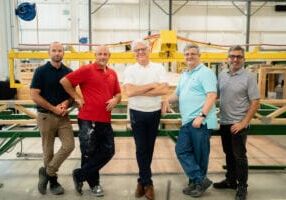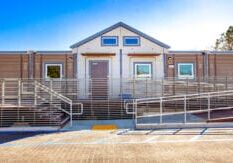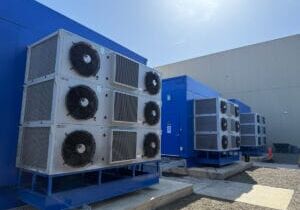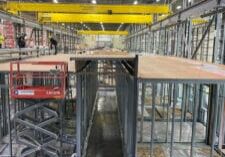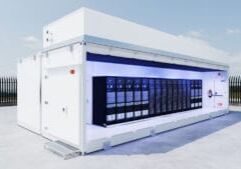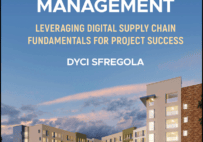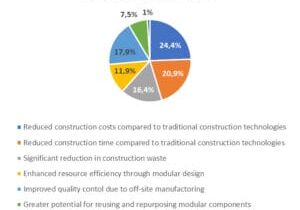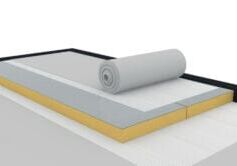Modular vs. Stick Built and A Case for the Future of Construction

About the Author: Meg Dowaliby is the Lead Copywriter at Pacific Mobile Structures owning the brand voice at every touchpoint while harnessing the power of storytelling to overcome communication challenges and misconceptions by crafting positive, compelling stories and narrative hooks that powerfully push the modular construction industry forward.
Do you remember the first time you heard about modular construction? Do you remember what your initial reaction was? Did you think it was cheap, low quality, poor insulation, ugly, and not built to last? Did a double-wide trailer appear in your mind?
If you answered “yes” to any of the above, you’re not alone. If you answered “yes” to any of the above, you’re not alone. The negative stigmas surrounding modular construction run rampant in the minds of most everyone, aside from those working in the modular construction industry.
One could point to these deeply held misconceptions and stigmas as a large reason why modular construction’s overall market share of the construction industry was 5.5% in 2021 despite its speed, environmentally friendly, versatile, and high-quality approach.
Aligning with these misconceptions, modular construction is rarely viewed as an alternative or substitute for stick-built construction. Many end users fail to realize that it does, in fact, achieve results that rival stick-built and, in many cases, surpass it. That’s because modular construction evolved from stick-built construction to meet a historical need for construction to be faster, more efficient, predictable, and shielded from external elements and harsh weather.
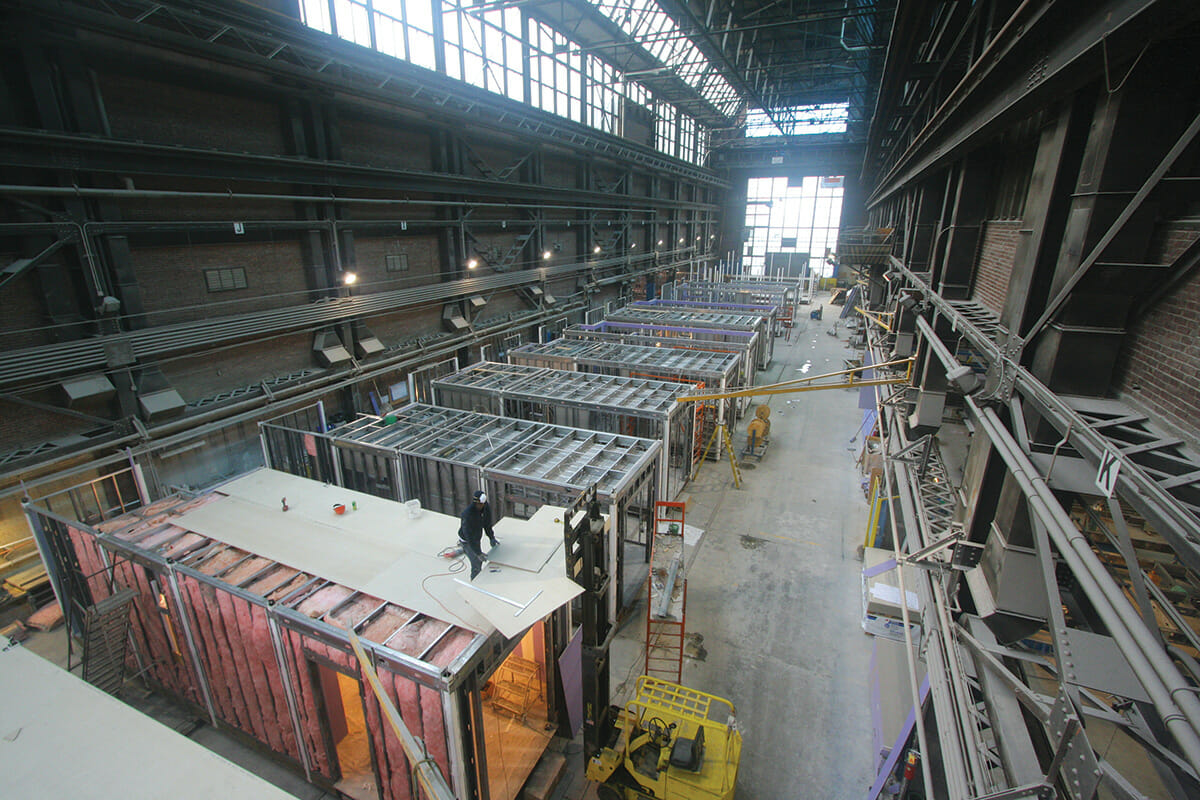
Types of Modular Construction
There are three types of modular construction as outlined by the Modular Building Institute and Pacific Mobile Structures:
- Permanent Modular Construction – an innovative, sustainable construction delivery method utilizing offsite, lean manufacturing techniques to prefabricate single or multi-story whole building solutions to deliverable module sections.
- Relocatable Buildings – a partially or completely assembled building that complies with applicable codes or state regulations and is constructed in a building manufacturing facility using a modular construction process.
- Semi-Permanent – a building that could be relocated without a lot of additional costs with a design that allows for minimal additional costs for removal and reinstallation regarding how the mateline connections are managed. Installed on a permanent style stem wall foundation to allow for flush to grade entry that meets ADA access requirements with applied additional exterior architectural elements to give it a sense permanence.
It’s important to note that modular construction is not the same as “manufactured” - such as manufactured homes that most are familiar with. This is where many of the previously stated stigmas come from.
A Construction Method Dating Back to Ancient Rome
Many people believe that modular construction is a newer way of building, but it’s a construction method that dates back to ancient Rome. We’ve all heard the phrase “Rome wasn’t built in a day,” but it was built in less days than it could have taken because the Romans employed modular construction.
As we know, Rome was a walled city. Along the wall, there were forts much like the ones in the Great Wall of China. The forts featured four gates, a central ceremonial area, baths, and a kitchen. Larger more permanent forts had central headquarters, a chapel for storing sacred weapons, rows of slate-roofed barracks, storage granaries, cookhouses, and latrines with running water large enough to accommodate 20 men.
To build these forts, Roman armies carried them in prefabricated wall sections containing dovetail and cross-halving joints that allowed them to be quickly fitted together on site for instant defense.
Fast forward to the 1600s and there’s a report that refers to a disassembled wood paneled fishing house that was shipped by boat from England to the United States to Massachusetts. The modular building was used to house fishermen that had recently made their way to America and trusted English construction methods.
The Portable Colonial Cottage
However, the first modular building officially on record was built by Henry Manning in the 1800s, as Gilbert Herbert’s Journal Article for the Journal of the Society of Architectural Historians called The Portable Colonial Cottage recalls. Manning’s son was part of a small group of settlers arriving from Britain to make a new home in West Australia on the banks of the Swan River. Tents and flimsy huts built from local materials were no match for the harsh environment and conditions brought on by the weather. With survival on the line, Manning built a small, well-constructed wooden house in sections back in England and then it was packed for export and assembled with ease on site.
The little wooden house caught on with the other settlers and locals and became instrumental in protecting families from the weather and theft. These little wooden houses could hold up in the harsh environment because they weren’t built in it. The materials they were constructed with were of a higher quality than what could be sourced locally, and the environment they were constructed in was more predictable and fair-weathered than West Australia.
Back across the Pacific Ocean, modular construction was in high demand as the United States expanded westward. During the gold rush of 1849, more than 500 preassembled homes were shipped from factories in New York to California.
The First Modular Hospital
But it wasn’t just housing that modular construction was building back in the 1800s. Entire commercial modular buildings were being built as well. Well-known architect Isambard Kingdom Brunel designed a completely modular hospital at the height of the Crimean War in 1855 known as the Renkioi Hospital. It was designed, constructed, and shipped within five months and provided a facility for timely medical care during the conflict.
The Sears Modern Home Program
Fast forward to the turn of the 20th century and Sears, Roebuck, and Co. began selling prefabricated houses through its Sears Modern Home Program, geared towards the middle class and WWI veterans. Customers could order one of the 400 house plans from their catalog and receive it in easy-to-construct sections. All that was needed was land to place it on and labor to put it there. Once purchased by catalog, the building materials were shipped by train and ready to move into in as little as 90 days.
The Sears Modern Home Program was popular, and it helped build American neighborhoods as we know them today.
So where do the stigmas around modular construction come from?
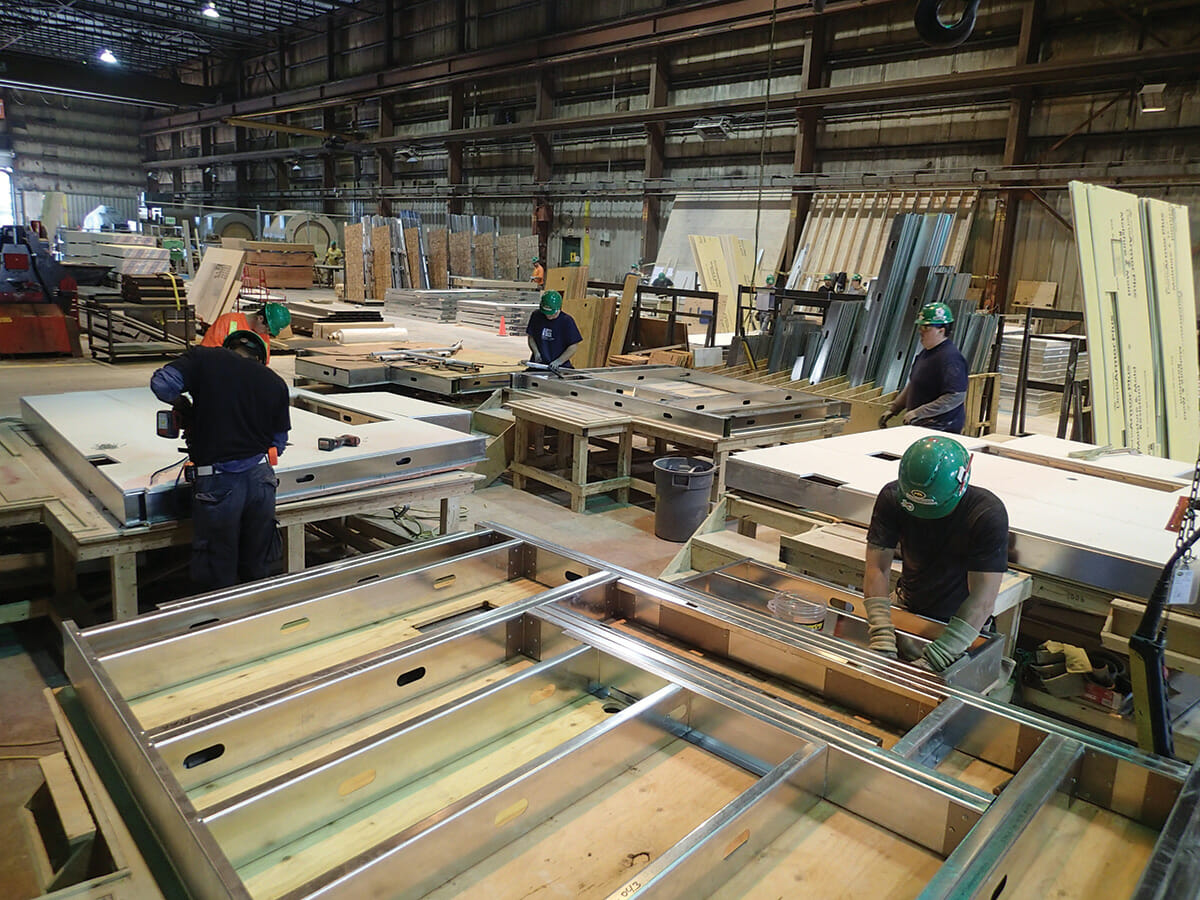
Origins of Stigmas Around Modular Construction
“The perception of modular construction is dependent on its application,” says Samantha Taylor, Modular Manager at Steenhof Building Services Group. The general public drives prevailing opinions and stigmas when it comes to anything, including modular construction. The general public is most familiar with modular construction through modular homes.
Manufactured homes are low-cost housing built in sections and can be single or multi-width. They can be transferred to a property and permanently affixed. If they are not permanently affixed, financing options are limited. Manufactured homes follow the Federal HUD Code.
On the other hand, modular homes are higher-cost homes consisting of multiple factory-made pieces, or “modules,” that are assembled and permanently placed on site. They are eligible for standard financing options and follow local, state, and regional codes just like traditional stick-built homes.
Because modular homes were popular amongst the middle class and those who might find it more challenging to pursue homeownership otherwise, modular homes became known for their low costs and eventually were viewed as low-income housing even though that was not the case.
With the perception of low-income housing, the quality of manufactured homes was called into question. There were some shortcomings that modular homeowners faced such as leaking exteriors and poor heating systems. Many point to 1976 as the year the stigmas around modular construction really took hold.
In 1976, Congress set out to address the issues manufactured homeowners were experiencing and authorized an HUD Code to mainstream the homes by improving and standardizing them. But the problems didn’t go away. Then, in 1994, the HUD Code was updated to further address these challenges. Today, modular homes and buildings are constructed to meet and follow all the same codes and building criteria as stick-built construction, but the stigmas remain.
How does the Modular Construction Industry Smash its Stigmas?
After hundreds of years and a well-established history, Andrew Seelye, President of G-Pod Americas, ponders why modular only makes up less than 10% of the construction industry. He points to the stigmas around modular construction that developed over time, but he also points out that the only way to smash the stigmas is to appeal to the end users of modular buildings. Afterall, that’s where the stigmas originated.
Seelye believes that the modular construction industry isn’t doing everything they can to appeal to the end user. He says the basis for that statement is tied to the volume of market that modular construction holds in the construction industry, which is the previously stated 5.5% overall market share and the 6.3% that manufactured housing represents in the nation’s housing stock.
“If we don’t have a greater buy-in from the end users, we don’t have influence,” he says. But he also notes that we don’t seem to have the ability to engage the end user when we start a project. “Typically, the builder (or possibly the architect) is the one that makes the decision to do the project offsite.”
Modular construction companies are called upon when someone decides to build something offsite, and most times that is not the end user. But to smash the stigmas, Seelye believes that if the modular construction industry plays the long game and focuses on appealing to the end user, the modular construction industry can increase its market share when the end users are the ones who are asking for offsite construction.
“The end user has the potential to be the industry’s biggest advocate,” he says. “It’s up to us [the modular building industry] to influence that marketplace and point out why we’re better and why we’re doing something more interesting. It’s not always easy, but the language can develop, and we can make that case to the point that we can deliver something that’s distinct and has clear value for the end user. Even though we’re not directly engaged in a transaction with the end user, we’ve still got a way to showcase [through architecture and design] what we’re doing in terms of delivering value to them,” he further explains.
The Look is the Hook
The advantages of modular construction ring loud and clear to developers, builders, and general contractors. However, the end user – whose opinions drive stigmas and beliefs about modular construction, doesn’t have a direct line of sight as to its advantages and how they add value for them.
“The look is the hook,” says Seelye. “It’s a hard thing to show that [modular construction] is faster, safer, and better – and there aren’t many cases where that’s translated to the end user. The best we can do at this moment in the history of modular construction is to make it look different. If we can visually differentiate ourselves, we can tie in a conversation [with the end user].”
G-Pod Americas is trying to do just that with eye-catching designs and modern dwellings built for the future of residential housing, lodging, and
hospitality. “I believe the only hope we have is to create a blank slate for the customer to assign their own value to things. If we don’t have too many of the details sorted out, we can still provide an engineered and architecturally developed solution that leaves a little bit to the end user. I don’t know what that looks like in the future, but the best we can do is create a volume that offers efficiencies to the builder and developer while making it appealing to the end user,” explains Seelye.
Advantages of Modular Construction
The advantages and efficiencies of modular construction that appeal to developers, general contractors, and builders can be summed up in three words: greener, faster, and smarter.
The Modular Building Institute outlines the main points around these three advantages best:
- Greener: The factory-controlled process generates less waste, creates fewer site disturbances and allows for tighter construction.
- Faster: Construction of modular buildings occurs simultaneously with site work, allowing projects to be completed in half the time of traditional construction.
- Smarter: Modular buildings are built with the same materials and to the same building codes and architectural specifications as traditional construction. Once assembled, they are virtually indistinguishable from their site-built counterparts.
With modular construction, site development and foundation work happen simultaneously with the construction of the building at the factory making it 30%-50% faster than traditional stick-built construction as shown in the image above.
But that’s just the start of a very long list of advantages that have brought the construction industry back to modular construction time and time again throughout history.
Flexibility
National Sales Manager at Sunbelt Modular, Inc., Jay Vanvlerah, also brought up flexibility of modular concept and speed of design as two major additional advantages of modular construction.
“As long as you have a good modular-minded architect, there’s a lot you can do [with modular construction].” Additionally, “the speed of design [for a modular building] doesn’t get talked about enough. When you’re going with a stick-built building, the plans take a year or more while plans for a modular building take a matter of months.”
The Power in Repeatability
Vanvlerah also touted repeatability as an advantage of modular construction saying, “Once all the engineering is done, you can take a building and repeat it.”
Samantha Taylor, Modular Manager at Steenhof Building Services Group, is seeing first-hand developers understanding the value in this repeatability in Ontario, Canada. “A few developers are understanding the value of repeatability. Efficiency is where they end up saving and apartment building developers are especially recognizing this,” she says. The efficiency in repeatability is marked by the site team not being nearly as busy, by focusing only on putting things together when the modular units arrive onsite.
Structurally Sound
Because modular construction happens offsite, another notable benefit of modular buildings is that they are more structurally sound. They are designed and engineered to withstand transport to the site, commonly along highways traveling upwards of 60 miles per hour and sealed to be weathertight when it arrives on site to protect everyone before finishes are completed. Jay Vanvlerah argues that the benefit of a modular building lies in its weathertight requirement alone.
Modular Construction – A First Responder of the COVID-19 Pandemic
The advantages of modular construction were made evidently clear during the COVID-19 Pandemic. Over the past few years, Pacific Mobile Structures saw an uptick in the number of both relocatable and permanent health clinics and medical centers they were providing. Their modular construction solutions made it possible for these facilities to be delivered to a site and ready for use in as little as three days or built in less than two months and be fully operational. The ability to provide timely solutions empowered healthcare facilities and their workers to provide the testing and care people needed with the extra space to do so. In fact, modular building solutions offered space for care in rural and remote places where there wasn’t any before.
Another symptom of the COVID-19 Pandemic was the soaring costs of building materials while the need for housing was at an all-time high. People relocated and exercised their newfound location freedom due to the uptick in remote work. In Canada, Taylor witnessed developers being drawn to modular construction to meet the demands of the housing market with speed and avoid the high costs of materials as best they could.
Steenhof Building Services Group is located near an area of Ontario known for higher-end housing. By constructing buildings off-site in areas where the cost of materials is cheaper, developers maximized overall cost-effectiveness while achieving the desired results.
Now, because there is such a demand for housing, many states, provinces, and countries are incentivizing the use of modular construction because of its speed, offering initiatives and grants for housing built within certain timelines. “There’s a rapid housing initiative in Canada,” says Taylor. “They are trying to do everything they can to meet housing needs, and the government is promoting modular construction specifically, requiring that some construction has to be modular to meet timelines.”
Taylor says that the COVID-19 Pandemic has proven that the efficiency and speed are modular construction’s top two benefits and the reasons why developers and general contractors choose modular construction over stick built – especially during unpredictable and tumultuous times. “If you can have this repeatable solution, you’re going to be more efficient. [Right now,] we have an [immediate] need for housing. When you think about how you can apply modular construction to meet that need, it’s a major selling point especially for someone who’s already in the construction industry. And, if they’re able to complete more projects in a shorter timeframe, that equates to more money made.”
Modular Construction isn’t for Everyone – But Neither is Stick-Built Construction
To be fair, there are drawbacks of modular construction just as there are drawbacks of stick-built construction. John McMullen at the Modular Building Institute notes modular construction as an ideal option for buildings that have lots of repeated design features such as apartments, hotel rooms, office buildings, and more. Factories can create lots of identical (or extremely similar) units efficiently and deliver them in a timely manner. However, he states, “When a building is very unique or located in an area that makes the transportation of modules very difficult, modular construction may not be ideal.”
If time is not of the essence and achieving a truly unique look is top priority, stick-built construction might be the better option. John points out that the key benefits of stick-built construction are two-fold saying, “It allows for truly unique structures, and it is a well-understood, deeply-ingrained process with long-established roles for stakeholders and workers.”
However, there are some drawbacks of stick-built construction that John also points out including interrupted construction due to weather, change orders, and unforeseen site issues resulting in longer completions times. Most importantly, all of these drawbacks pose a far greater risk for cost overruns.
Stephen Shang, CEO of Falcon Structures, reiterates this saying, “Not all 10 million dollars are the same,” when he outlined the main drawbacks of stick-built construction. He went on to say that there’s a level of certainty around the final cost of structure built with modular construction, whereas a stick-built project quoted at 10 million dollars, for example, could really be 20 million when it’s all said and done.
The modular construction industry’s main selling point is that it can seamlessly emulate a stick-built building, but historically speaking, modular construction was born out of a need for a better way to build. So, why does the practice of modular construction tout its ability to hide in the shadows of what it’s trying to be better than when it’s always been the future of construction?
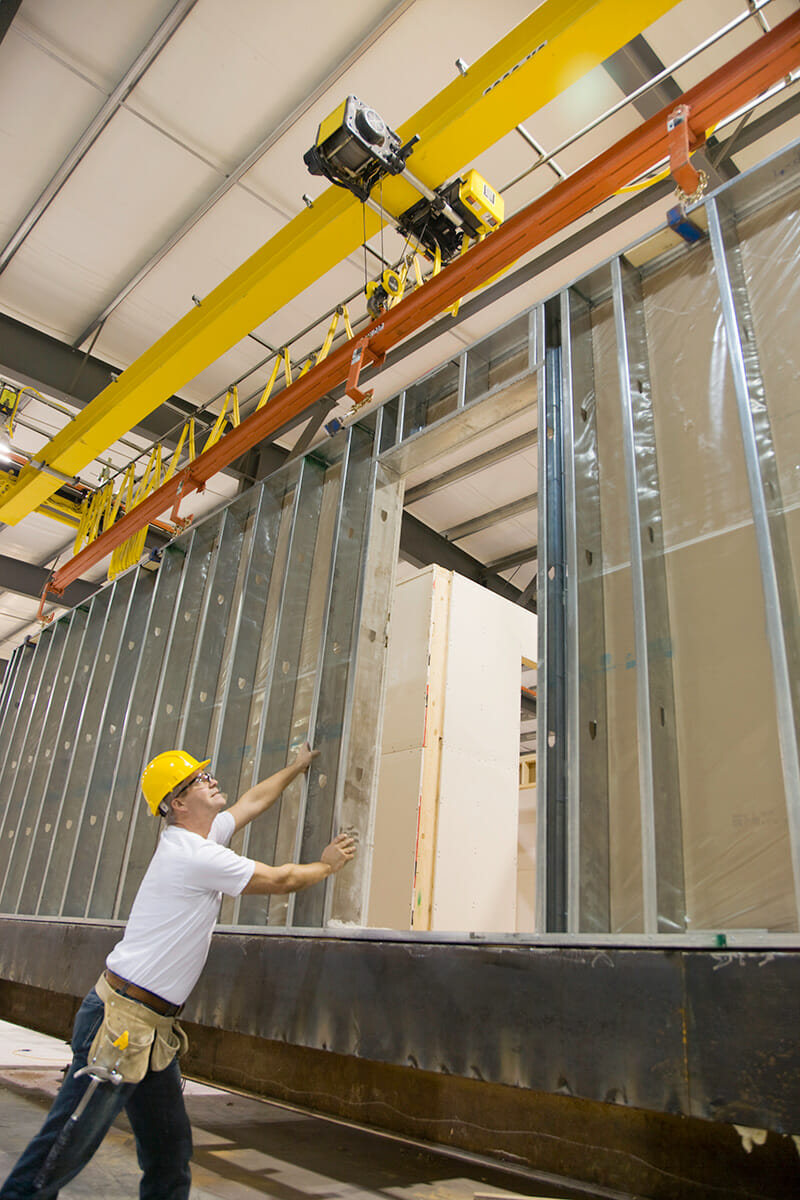
The Future of Construction
There are a lot of things modular construction can do that stick-built can’t. Climate change, a continued housing crisis, and even future pandemics offer an opportunity for modular construction to show the world what it’s made of. It might be our only hope for sustainable building practices as land becomes scarcer and efforts to protect the planet become amplified.
Two particular aspects of modular construction that have the power to become highly attractive to environmentally conscious end-users is the smaller footprint and greener practices of modular construction. There are a few companies already in the business of appealing to environmentally conscious end-users. Pacific Mobile’s SAGE Classroom and SAGE Campus are alternative, healthier learning environments that are resource efficient and environmentally safe for inhabitants and the Earth.
Here are a few of the features and benefits that make Pacific Mobile Structures’ SAGE line the latest thinking in healthy learning environments with the best in green building practices:
- Improved HVAC systems incorporate energy recovery ventilation for healthier air, noise reduction, and energy conservation.
- More and bigger windows increase natural daylight and stimulate learning, while conserving electricity.
- Steel floor structures afford greater portability and longevity.
- Environmentally safe building materials don’t release toxins into the air.
G-Pod Americas is in the business of designing for the future with their Dwell and Nexus products that offer a housing and lodging alternative with little site disruption, causing less harm to the earth, as well as utilizing solar power and rainwater to conduct complete off-grid construction.
This future of construction and design is already welcomed with open arms by millennials and now, Gen-Zer’s. These generations have embraced “van life” and tiny home living - simultaneously out of both necessity and out of a more environmentally mindful and conscientious lifestyle. These next generations could drive the future of construction towards modular. Seelye agrees, noting that he encounters these generations frequently through G-Pod Americas, but he also believes that their nostalgia could hold them back from pioneering the direction of the construction industry towards modular. “There’s still an attraction to what was for them,” he says. “I don’t see them living in something that’s completely productized, because there’s so much nostalgia.”
Future Nostalgia
We hold the places where we live, work, learn, and gather near and dear to our hearts. It’s where we connect and create memories together, each of us living in our own experience and attaching that experience to the place it was experienced. When we look ahead and imagine futuristic versions of those places, many of us yearn for what we know or knew and become nostalgic for it to connect us with our experiences and memories.
“Future nostalgia” (a term borrowed from pop star, Dua Lipa’s album title), best describes what Seelye is trying to achieve with G-Pod Americas’ designs. “I’m trying to use some nostalgia, but it’s 1950’s futurism. I want that to be a reference point because if we cover industrial chic and future nostalgia, we have two really visually rich places to work without having to go very far because it’s well-understood,” he explains.
At the same time, it’s important to acknowledge we’ll always have more standardized, traditional housing built by both modular and stick-built construction. City standards and requirements, HOAs, and people who simply just want to “fit in” will maintain it for the foreseeable future. However, if the modular construction industry can become curators of this “future nostalgia,” it might just be what generations years from now long for.
Advice From an Industry Pro for Your First Modular Construction Project
Maybe you’re curious about modular construction. You find the benefits appealing and you think it would be perfect for your next project, but it’s new to you. “People who are new to modular are seeing this new way to build things and have this plan that they’ve completed in the past with stick-built, but they want to harness the benefits of modular construction – especially speed,” says Taylor.
When this happens, she analyzes their plans and does what she can, but oftentimes the results aren’t what they had in mind, or modular construction simply isn’t compatible at all with their project. Other times, Steenhof is contacted by manufacturing facilities who need someone who can bring an idea to life and want to utilize modular construction to do so. Sometimes they have plans, sometimes they have no plans, and other times they fall everywhere else in-between, coming to them with constraints, nonetheless. These are the issues that arise from a design and engineering perspective when we try to fit modular construction into stick-built construction’s box.
So, Taylor offers some sound advice for any modular project to go off without a hitch: “Contact your key players from the beginning, which include your design team, modular consultants, site installer, and local building official. If you have all those key players from the beginning, you’ll set yourself up for success, your project will go smoother, and you won’t have as many complicated or unexpected revisions to your design.”
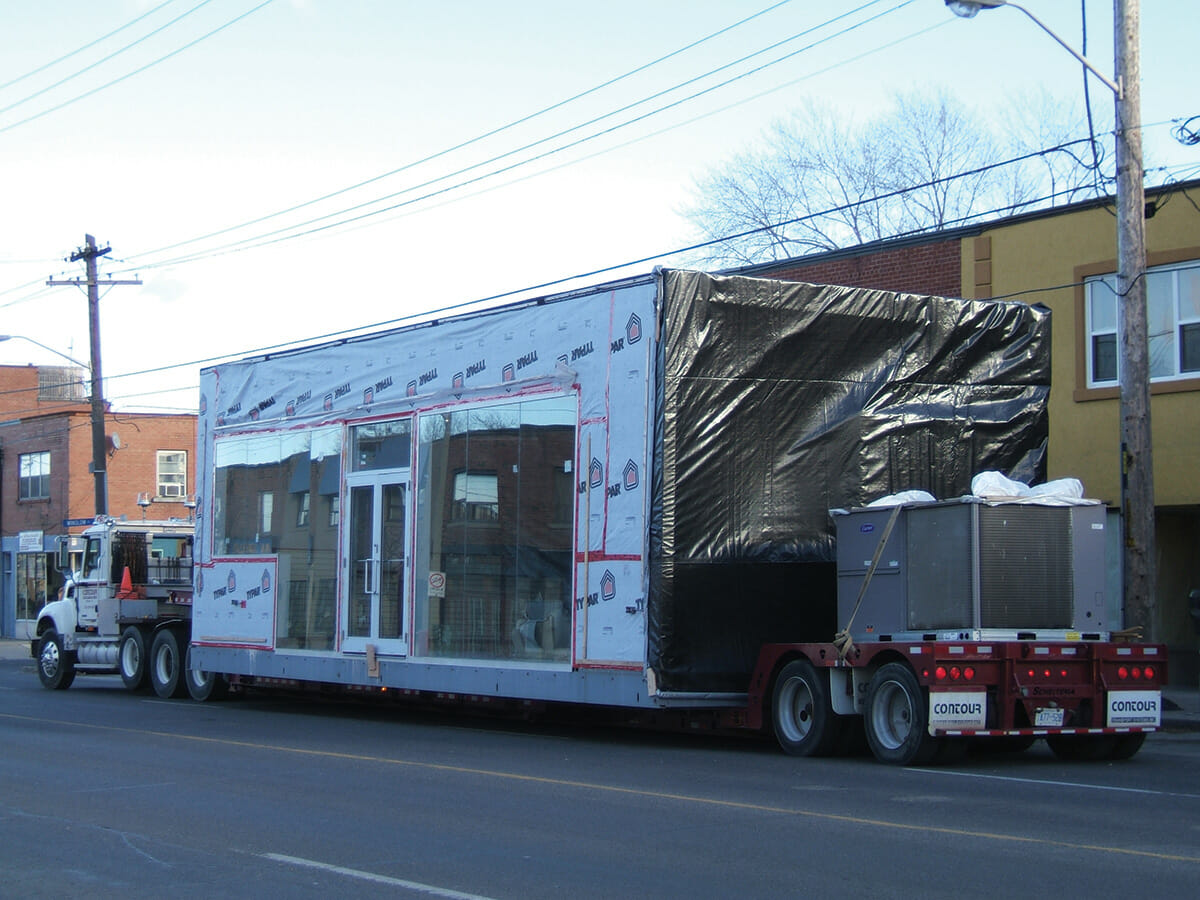
Is Modular Construction Right for Your Project?
Every project is unique, and at the end of the day, only those closest to it know the project best. Modular construction might be the best option to get the job done, or it might not be. In order for developers, general contractors, builders, and even end users to make the best decision for their project, the modular construction industry must do their part in helping them to make the most informed decision. As an industry, we want more of the construction pie, but we also want what’s best for each and every project.
“One of the key things we do at Falcon Structures is scrub for fit. There are projects that just don’t make sense for modular,” says Shang. One thing’s for sure, everyone in the modular construction industry would agree that that’s okay. “We’re here to help when you need, and when you don’t, we’ll continue to innovate, imagine, and pioneer the future of construction,” adds Shang.
The Next Chapter in the History of Modular Construction
“I feel very fortunate to be part of this industry for so many years,” says Garth Haakenson, President and CEO of Pacific Mobile Structures. “With the economic challenges we all face in material and labor costs and the environmental goals of reducing waste and energy use, modular construction has always been a very efficient method to build. The design and quality improvements over the years is something we all take a lot of pride in.”
“These past two years dealing with spiraling inflation and supply chain disruptions have forced many people to reevaluate how best to construct their project. Many people have turned toward modular construction. Given the advancements with manufacturing technologies such as robotics, CNC machining and the application of Lean processes, I think we’ll only continue to see more of that,” says Tom Coyle, Executive Vice President of Construction at Pacific Mobile Structures.
Throughout key moments in history, modular construction has always played a subtle but critical role. This moment in history is no different. We live in a time when the cost of living and the demand for housing are skyrocketing on the backdrop of an ever-looming climate crisis. When you think about it, the residential housing industry really hasn’t had any huge disrupters enter the space and truly change how we think about where we live. Additionally, performing commercial construction offsite is still not a widely accepted concept even though it improves efficiency, lowers costs, and results in less waste. The construction industry is where innovation is needed the most if we are going to make strides to solve the affordable housing crisis and reduce our impact on the planet for good.
This next chapter in the history of modular construction must be one in which end-users are educated and this construction method, dating back to Ancient Rome, finally steps out of the shadows to capture a larger share of a market in dire need of creativity, innovation, and a better way to build.
Now what comes to mind when you hear the words “modular construction?”
About Pacific Mobile Structures: Since 1983, Pacific Mobile Structures has provided superior mobile office space to thousands of jobsites. Family-owned for two generations and with multiple locations throughout Washington, Oregon, Idaho, California, and Texas, Pacific Mobile Structures is known for delivering the highest-quality mobile offices, permanent modular construction, educational facilities, and government services, with a commitment to customer service excellence built on the cornerstones of experience, quality, flexibility, and dedication.
More from Modular Advantage
Resia: Breaking All the Rules
Resia Manufacturing, a division of U.S.-based Resia, is now offering prefabricated bathroom and kitchen components to industry partners. Its hybrid fabrication facility produces more precise bathroom and kitchen components (modules) faster and at lower cost than traditional construction. Here’s how Resia Manufacturing does it.
How LINQ Modular Innovates to Bring Modular To The Market in the UAE and Beyond
LINQ Modular, with an office and three manufacturing facilities in Dubai, is a modular firm based in United Arab Emirates. The company is on a mission: to break open the housing and construction markets in the Gulf Cooperation Council (GCC) area with modular.
ModMax: Redefining Modular Construction with Confidence and Precision
ModMax was born out of frustration—frustration with five persistent pain points in modular construction: Permitting bottlenecks. Production delays. Rigid designs. Disconnect between “the office” and the field. Lack of transparency and communication.
LifeArk: Disaster-Resilient Housing from Recycled Plastic and 100-year-old Technology
Wee compares LifeArk’s housing units to Yeti coolers, as they are built similarly. Each component takes 15 to 20 minutes to manufacture, has an R-value of 40, and includes molded slots and chases for wiring, plumbing, fire sprinklers, and other utilities.
Building the Future of Modular Edge Infrastructure
The edge data center market is expanding rapidly, driven by the surge in AI workloads, IoT adoption, and the need for localized compute power. In these environments, sustainability, scalability, and reliability are non-negotiable. Cooling is among the most complex challenges for operators—and one of the most decisive factors in long-term success.
Accelerating Light-Gauge Steel Construction: A Semi-Automated Digital Workflow for Off-Site Projects
For construction professionals, the message is clear. By adopting semi-automation and digitalization, companies can deliver projects faster, more accurately, and more profitably, while also building stronger collaboration across teams. The approach is not about replacing people with machines, but about empowering people with better tools and processes.
Why Modular Data Centers Are Gaining Momentum
Artificial intelligence, high-performance computing, and edge applications push the limits of traditional “stick-built” data centers. They take years build, often struggle with high density workloads, and aren’t optimized for deployments near end users. Modular data center platforms are purpose-built to address these challenges, offering flexibility and scalability to adapt to evolving technologies, while opening new opportunities for the modular construction industry.
Supply Chain Innovation in Action: 5 Habits Every Modular Leader Should Practice
By applying these principles to supply chain practices — collaborative planning, strategic procurement, scenario modeling, digital tools, and transparent forecasting — construction leaders can build value chains that are not just efficient and agile, but truly innovative.
Exploring the Role of Modular Integrated Construction (MiC) in Advancing Circular City Principles – A Survey of Stakeholder Perspectives
The survey findings highlight the significant potential of Modular integrated Construction (MiC) in advancing the development of circular cities. By reducing costs, accelerating construction timelines, and minimizing waste generation, MiC offers a promising approach to sustainable urban development.
The Use of MS POLYMER™-Based Sealants and Adhesives in Modular Building
These products combine flexibility and elastic recovery with excellent adhesion to different substrates and have already shown their usefulness in traditional construction. Now it’s time for them to be put to use in the modular construction industry.



